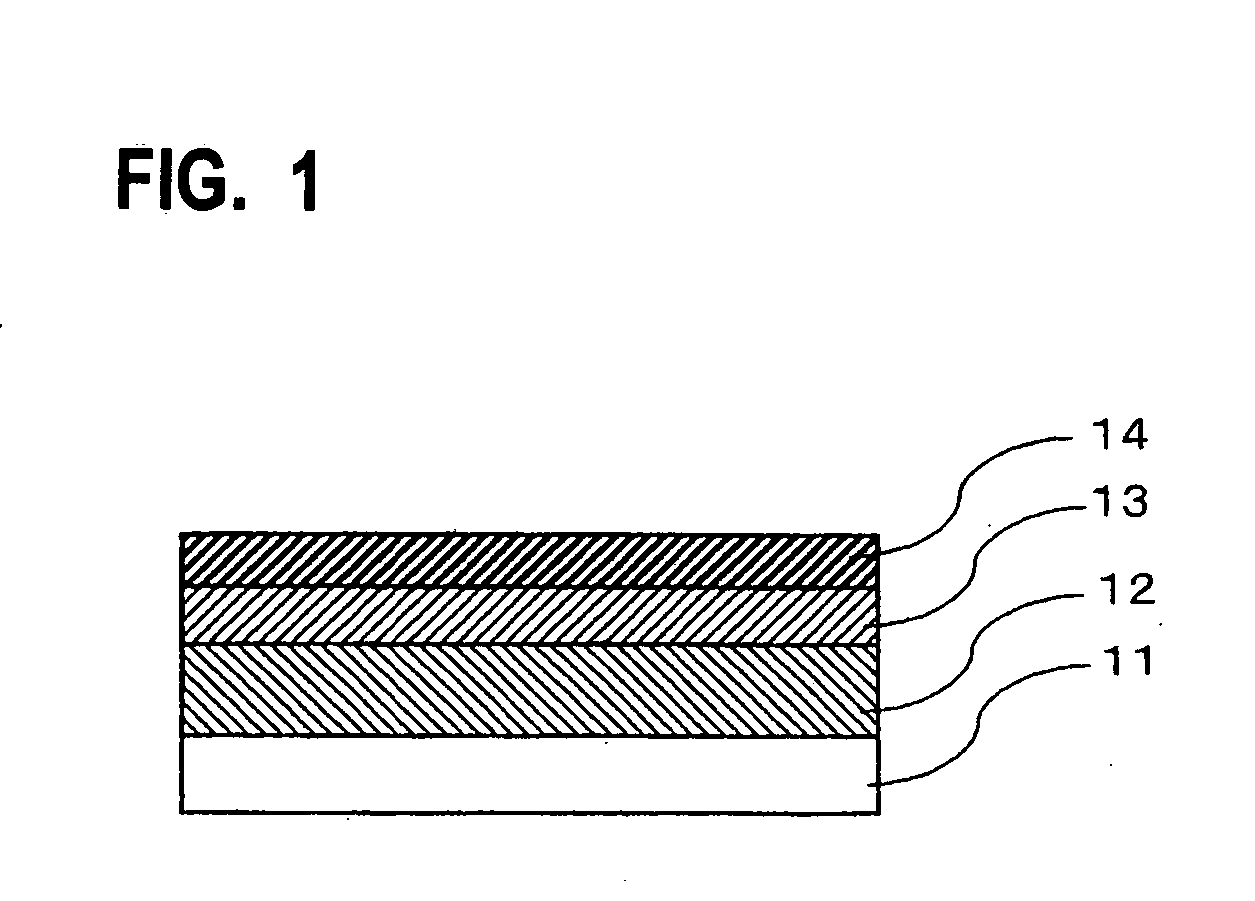Re-peelable pressure-sensitive adhesive sheet
a pressure-sensitive adhesive and adhesive sheet technology, applied in the direction of film/foil adhesives, chemistry apparatuses and processes, transportation and packaging, etc., can solve the problems of pressure-sensitive adhesive sheets, wafers, thermally contracting largely,
- Summary
- Abstract
- Description
- Claims
- Application Information
AI Technical Summary
Benefits of technology
Problems solved by technology
Method used
Image
Examples
example 1
[0063] (Formation of an Intermediate Layer)
[0064] As a base film, a polyethylene naphthalate film of 25 μm thickness (trade name: Teonex TM-Q83, manufactured by Teijin Du Pont Films Japan Ltd.) was used. The heating contraction percentage of this film was 0.90%. The glass transition temperature and the melting point thereof were 121° C. and 269° C., respectively.
[0065] A 40% by weight solution of polyisobutylene (gel fraction: 30% by weight) having a weight-average molecular weight of 70,000 in toluene was applied onto the base film, and then dried to form a polyisobutylene intermediate layer of 80 μm thickness.
[0066] The storage elastic modulus (G′) of the polyisobutylene intermediate layer was 5.5×104 Pa at 23° C. and 1.1×103 Pa at 200° C.
[0067] (Formation of a Re-Peelable Pressure-Sensitive Adhesive Sheet)
[0068] Eighty five parts by weight of butyl acrylate, 15 parts by weight of ethyl acrylate, 5 parts by weight of acrylic acid and 2 parts by weight of 2-hydroxyethyl acryla...
example 2
[0069] (Formation of an Intermediate Layer)
[0070] One hundred parts by weight of 2-ethylhexyl acrylate and 2.5 parts by weight of acrylic acid were copolymerized to prepare a 40% by weight solution of an acrylic polymer (gel fraction: 30% by weight) having an average-weight molecular weight of 400,000 in toluene. The following was blended with 100 parts by weight of solids in the acrylic polymer solution, so as to prepare an acrylic type adhesive agent solution: 0.03 part by weight of an epoxy type crosslinking agent (TETRAD C, manufactured by Mitsubishi Gas Chemical Co., Inc.). An acrylic intermediate layer was formed in the same manner as that of Example 1 except that the acrylic type adhesive agent solution prepared herein was used instead of the adhesive agent solution.
[0071] The storage elastic modulus (G′) of the acrylic intermediate layer was 3.4×106 Pa at 23° C. and 8.3×103 Pa at 200° C.
[0072] (Formation of a Re-Peelable Pressure-Sensitive Adhesive Sheet)
[0073] In the sa...
example 3
[0074] (Formation of an Intermediate Layer)
[0075] As a base film, a polyethylene terephthalate film (trade name: S-105, manufactured by Toray Industries, Inc.) of 25 μm thickness was used. The heating contraction percentage of this film was 2.0%. The glass transition temperature and the melting point thereof were 120° C. and 258° C., respectively.
[0076] Onto this base film was applied the acrylic type adhesive agent solution prepared in Example 2, and then the solution was dried to form an acrylic intermediate layer of 80 μm thickness.
[0077] (Formation of a Re-Peelable Pressure-Sensitive Adhesive Sheet)
[0078] In the same manner as that of Example 1, the same acrylic type adhesive agent layer was transferred onto the acrylic intermediate layer formed herein, so as to form a re-peelable pressure-sensitive adhesive sheet.
PUM
| Property | Measurement | Unit |
|---|---|---|
| storage elastic modulus | aaaaa | aaaaa |
| storage elastic modulus | aaaaa | aaaaa |
| melting point | aaaaa | aaaaa |
Abstract
Description
Claims
Application Information
 Login to View More
Login to View More - R&D
- Intellectual Property
- Life Sciences
- Materials
- Tech Scout
- Unparalleled Data Quality
- Higher Quality Content
- 60% Fewer Hallucinations
Browse by: Latest US Patents, China's latest patents, Technical Efficacy Thesaurus, Application Domain, Technology Topic, Popular Technical Reports.
© 2025 PatSnap. All rights reserved.Legal|Privacy policy|Modern Slavery Act Transparency Statement|Sitemap|About US| Contact US: help@patsnap.com


